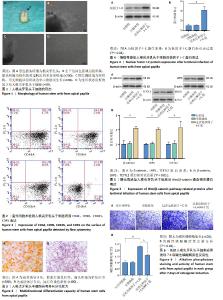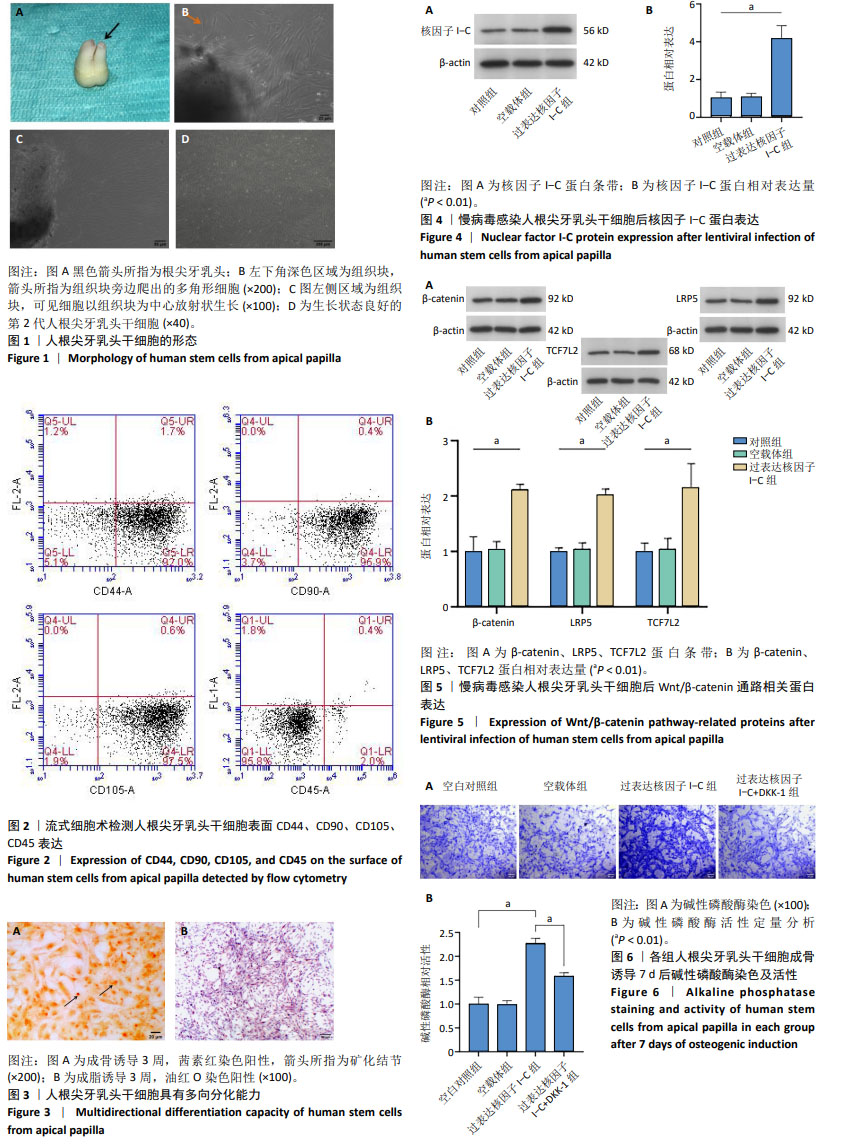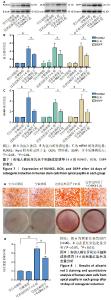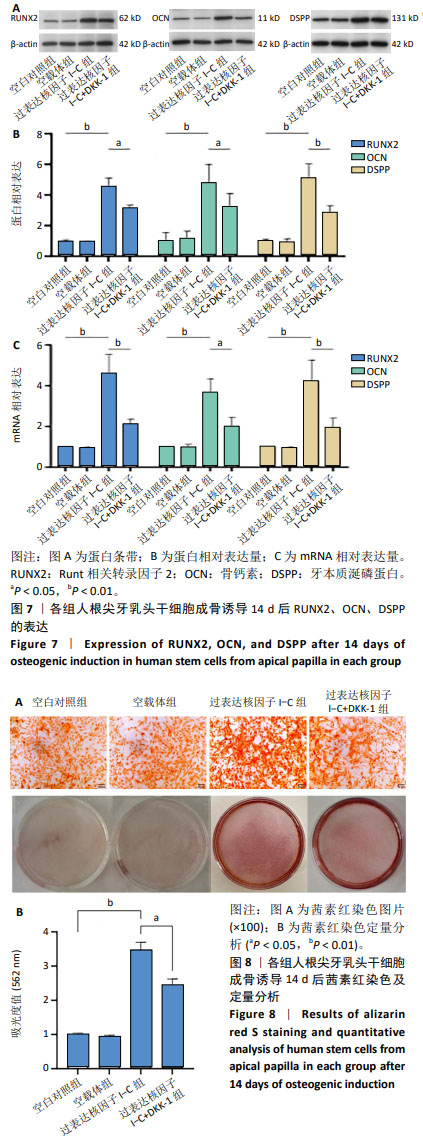[1] CAO L, SU H, SI M, et al. Tissue Engineering in Stomatology: A Review of Potential Approaches for Oral Disease Treatments. Front Bioeng Biotechnol. 2021;9:662418.
[2] ALARCÓN-APABLAZA J, PRIETO R, ROJAS M, et al. Potential of Oral Cavity Stem Cells for Bone Regeneration: A Scoping Review. Cells. 2023;12(10):1392.
[3] LI B, OUCHI T, CAO Y, et al. Dental-Derived Mesenchymal Stem Cells: State of the Art. Front Cell Dev Biol. 2021;9:654559.
[4] KANG J, FAN W, DENG Q, et al. Stem Cells from the Apical Papilla: A Promising Source for Stem Cell-Based Therapy. Biomed Res Int. 2019;2019:6104738.
[5] ZHANG W, YELICK PC. Tooth Repair and Regeneration: Potential of Dental Stem Cells. Trends Mol Med. 2021;27(5):501-511.
[6] SHEN Z, TSAO H, LARUE S, et al. Vascular Endothelial Growth Factor and/or Nerve Growth Factor Treatment Induces Expression of Dentinogenic, Neuronal, and Healing Markers in Stem Cells of the Apical Papilla. J Endod. 2021;47(6):924-931.
[7] CHEN K, XIONG H, HUANG Y, et al. Comparative analysis of in vitro periodontal characteristics of stem cells from apical papilla (SCAP) and periodontal ligament stem cells (PDLSCs). Arch Oral Biol. 2013;58(8):997-1006.
[8] LIU Q, GAO Y, HE J. Stem Cells from the Apical Papilla (SCAPs): Past, Present, Prospects, and Challenges. Biomedicines. 2023;11(7):2047.
[9] SONG Y, SONG F, XIAO X, et al. Expression Levels of WNT Signaling Pathway Genes During Early Tooth Development. Organogenesis. 2023;19(1):2212583.
[10] ZHANG H, GONG X, XU X, et al. Tooth number abnormality: from bench to bedside. Int J Oral Sci. 2023;15(1):5.
[11] JIN Y, WANG C, CHENG S, et al. MicroRNA control of tooth formation and eruption. Arch Oral Biol. 2017;73:302-310.
[12] 付乙,张羽,何梅,等.碱性成纤维细胞生长因子通过激活Wnt/β-Catenin信号通路促进根尖牙乳头干细胞的增殖[J].中国组织工程研究,2022,26(13): 2050-2055.
[13] CUI Y, XIE J, FU Y, et al. Berberine mediates root remodeling in an immature tooth with apical periodontitis by regulating stem cells from apical papilla differentiation. Int J Oral Sci. 2020;12(1):18.
[14] LEE DS, SONG YJ, GUG HR, et al. Nuclear Factor I-C Regulates Stemness Genes and Proliferation of Stem Cells in Various Mineralized Tissue through Epithelial-Mesenchymal Interactions in Dental Epithelial Stem Cells. Stem Cells Int. 2022; 2022:1092184.
[15] ZHANG J, WANG Z, JIANG Y, et al. Nuclear Factor I-C promotes proliferation and differentiation of apical papilla-derived human stem cells in vitro. Exp Cell Res. 2015;332(2):259-66.
[16] ZHOU J, WANG S, QI Q, et al. Nuclear factor I-C reciprocally regulates adipocyte and osteoblast differentiation via control of canonical Wnt signaling. FASEB J. 2017;31(5):1939-1952.
[17] 黄晓淋,张思慧,林实.酶消化联合玻片覆盖组织块法用于牙龈上皮细胞原代培养的研究[J].中国现代药物应用,2011,5(23):34-36.
[18] 关孟莹,何丽娜,潘爽,等.经典Wnt信号通路对hDPSCs增殖、迁移和成牙本质向分化的影响[J].口腔医学研究,2020,36(9):861-865.
[19] DING G, WANG W, LIU Y, et al. Effect of cryopreservation on biological and immunological properties of stem cells from apical papilla. J Cell Physiol. 2010; 223(2):415-422.
[20] LIU J, XIAO Q, XIAO J, et al. Wnt/β-catenin signalling: function, biological mechanisms, and therapeutic opportunities. Signal Transduct Target Ther. 2022;7(1):3.
[21] HENSON JH, SAMASA B, SHUSTER CB, et al. The nanoscale organization of the Wnt signaling integrator Dishevelled in the vegetal cortex domain of an egg and early embryo. PLoS One. 2021;16(5):e0248197.
[22] XUE C, LI G, ZHENG Q, et al. The functional roles of the circRNA/Wnt axis in cancer. Mol Cancer. 2022;21(1):108.
[23] REYES M, FLORES T, BETANCUR D, et al. Wnt/β-Catenin Signaling in Oral Carcinogenesis. Int J Mol Sci. 2020;21(13):4682.
[24] MUÑOZ-CASTAÑEDA JR, RODELO-HAAD C, PENDON-RUIZ DE MIER MV, et al. Klotho/FGF23 and Wnt Signaling as Important Players in the Comorbidities Associated with Chronic Kidney Disease. Toxins (Basel). 2020;12(3):185.
[25] GRONOSTAJSKI RM. Roles of the NFI/CTF gene family in transcription and development. Gene. 2000;249(1-2):31-45.
[26] XU C, XIE X, ZHAO L, et al. The critical role of nuclear factor I-C in tooth development. Oral Dis. 2022;28(8):2093-2099.
[27] PARK JC, HERR Y, KIM HJ, et al. Nfic gene disruption inhibits differentiation of odontoblasts responsible for root formation and results in formation of short and abnormal roots in mice. J Periodontol. 2007;78(9):1795-1802.
[28] 吴睿哲,吴洁,刘凯,等.基于分子对接及实验验证研究补肾健脾活血方通过Wnt信号通路防治骨质疏松症的作用机制[J].中医药导报,2022,28(8):27-31.
[29] AMANTEA CM, KIM WK, MELITON V, et al. Oxysterol-induced osteogenic differentiation of marrow stromal cells is regulated by Dkk-1 inhibitable and PI3-kinase mediated signaling. J Cell Biochem. 2008;105(2):424-436. |



